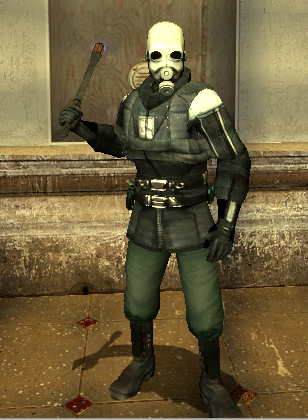Developer from first grader in 6 hours
How to turn a young schoolboy into an IT specialist in a couple of evenings? The answer is obvious – no way. But! Getting people interested, teaching them the basics of algorithmic thinking and giving them the joy of their first independent projects is quite possible.
It is for this purpose that we launched an educational project for the children of our company employees. The goal of this program is not to turn a child into a ready-made developer, but to awaken his interest in programming. The goal is to enable “developmental” thinking, to awaken the desire to independently analyze, experiment, search for information and understand new things.
It is unlikely that I will surprise you with the statement that most children love construction sets. It is the constructor principle that underlies the Scratch platform that we used for our classes. Only instead of conventional cubes, we have ready-made elements that a child can combine and modify, creating his own algorithms. There are no unknown foreign words, as in any programming language, but colored boxes with clear purposes. One piece of code is connected to another, all this fits into a sequence of multi-colored elements on the screen, and now our program comes to life, the specified actions are performed.
Important: The child does not write code in the traditional sense. He thinks in algorithms, learns to break a problem into stages, find solutions and see the result of his actions.
How the classes went
Small disclaimer: This is a special, additional educational program. Don’t worry, the children didn’t sit at the computer all the time, they studied at home once a week (1 hour each). Completing homework and demonstrating it in class is entirely optional; we did not strictly ask.
The project was conceived as an offline course for the children of our employees to introduce them to the IT field. We invited the guys to the office and worked on office machines. But then I had to adapt to the online format: Zoom, small groups (4-7 people aged 7-9 years, more girls than boys), working with the visual platform Scratch.
Of course, offline everything was a little simpler: you can work individually with each child, help, give advice, and live communication cannot be compared with virtual communication. There were also breaks when the children could get up from the table, jump and run. Online, we saw each other only through the screen, and not everyone had cameras, and it was difficult to understand whether the child was involved in the process.

We conducted 6 lessons (a little over an hour each). We started by mastering Zoom (with the help of our parents, of course), setting up and creating accounts. Then there was an introduction – the children talked about themselves, their hobbies, and we talked about what awaited them on the course. We learned basic terms (what a Sprite is, where the Scene is located), and became familiar with the Scratch interface and tools. Of course, it is impossible to cover all their diversity in 6 hours, so we focused on the most important thing, trying to interest the children and give them a basis for further independent research.

Each lesson we moved from simple to complex. In the first lesson, children controlled a funny cat – the Scratch mascot – taught him to move, swim or walk, figured out what the difference was, and changed his appearance. Gradually, the tasks became more complex, we mastered new tools (events, sounds), dealt with coordinates, and learned to create more complex algorithms. By the way, the kids really liked the bank of ready-made Scratch projects – games and cartoons. This was a great motivation to learn and create something of my own.
From time to time we had to improvise. For example, we expected the first lesson to take an hour, but the children “ran through” it in 15 minutes. I had to quickly adjust the program, and for the next classes prepare additional exercises in advance for such a case. We made the second lesson much more detailed.

The children were different. Some were already familiar with Scratch and were happy to show us their projects, while others were just starting their journey in the world of programming. We tried to take these features into account, thought through the tasks so that everyone would be interested, and no one would sit idle. And I think we succeeded. During the project, we saw the sincere dedication of the children, their interest, and emotions. There was even a phrase: “Now it’s clear what dad does at work!” It was incredibly inspiring and motivating.
What we learned while teaching children programming
For entry level Scratch is very good and I don't know of any other alternative. In fact, it has everything to start programming from scratch not only for a child, but also for an adult. But there is something that I would like to change in our classes in the future. If we were to launch the project again, we would definitely divide the children into groups with the same level of training. After all, even within the same age category, the difference in knowledge and skills can be significant. We are all different – both in age and character, and in mentality and experience. The third grader is like a sponge, he grasps everything instantly and reads from the screen very quickly. A first-grader may still be shy, he may miss something and get lost among the lively older kids. If the audience is diverse, the teacher has to maneuver, and there is a risk that for some the program will turn out to be boring or, on the contrary, difficult, while others will refuse to do anything at all.
And finally, a few recommendations for parents and companies who want to teach children programming:
If possible, put children with the same level of training into groups so that everyone is interested and comfortable in studying.
Feedback is important. Find out what children think about the classes, adjust the program taking into account their wishes and recommendations.
Give everyone the opportunity to play the role of a teacher and explain something to others.
Believe in the child, let him know that he will succeed. Well, the program, of course, must correspond to the level of preparation of the children: not be too complicated or too simple. Prepare backup versions of tasks in case you missed the preliminary assessment of abilities and skills.
Motivation and encouragement work wonders. Praise children for their successes, reward them for their efforts (stickers, stickers, badges, bonuses for activity), maintain their interest in cognitive activities.
Parents' participation and help are invaluable. Especially at the initial stage, when children are just getting acquainted with the world of programming and may encounter difficulties.
Yes, in 6 hours we, of course, did not turn the guys into programmers. But we managed to interest them in the world of IT, teach them to think logically, build algorithms, work in a team and find solutions, and this is already a lot.
For some, this was an opportunity to get to know an already familiar area better, while others discovered something completely new. We sought to give the children a basic set of knowledge, which, perhaps, will become a starting point for them in learning programming. Well, the ability to work in a team, clearly and competently formulate your thoughts will certainly be useful not only in programming, but also in any area of life.





